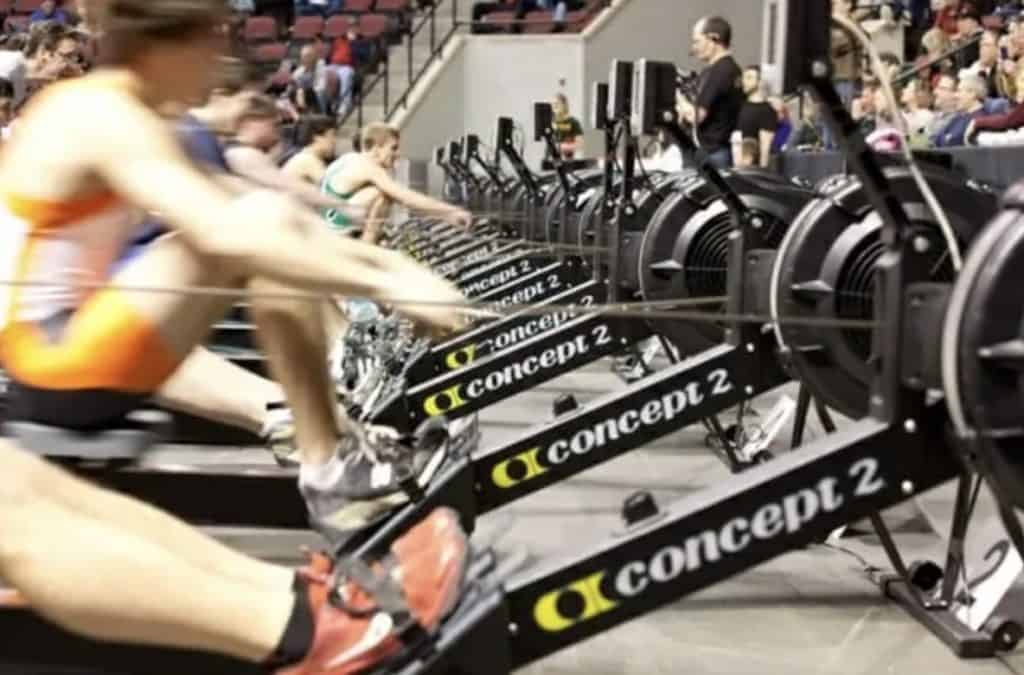What Is The Proper Rowing Machine Foot Position?
When you hop on a rower, your first question might be – how do I put my foot in this thing!? Rowing machine foot position is one of the most important steps when you first start out!
Rowing is a full-body workout with so many health benefits but to get those benefits, you need the correct position and form.
Did you know that foot position is just as important as how you position your body?
That’s right, one of the fundamentals of the basic rowing position is correct foot position. Let’s take a look at why it’s so important and how the proper foot position can benefit you.
Once you have your feet positioned properly, you’ll also want to know how to hold the handle – I have an article about this in my final section :)
Why Does Foot Placement Matter So Much When Rowing?
You may be wondering – why does my foot placement even matter? Well, it matters – a lot!
Below are the 3 main reasons why…
Comfort
Where you place your feet has a big impact on how comfortable you are during your workout. If you’re feeling discomfort or even pain, you’re not going to want to keep rowing!
The more comfortable you feel, the more likely you are to enjoy your workout and really be able to push yourself.
Proper foot placement allows for a more comfortable stroke and the ability to row longer!
Optimal Power and Drive
Three main points connect you to the machine: the foot stretchers, the seat, and the handle. The foot stretcher is most important because it’s where we push back to power our rowing stroke.
For a correct stroke, you should be pushing your foot into the foot stretcher. You want to be pushing through your mid-foot for optimal power, rather than through your toes.
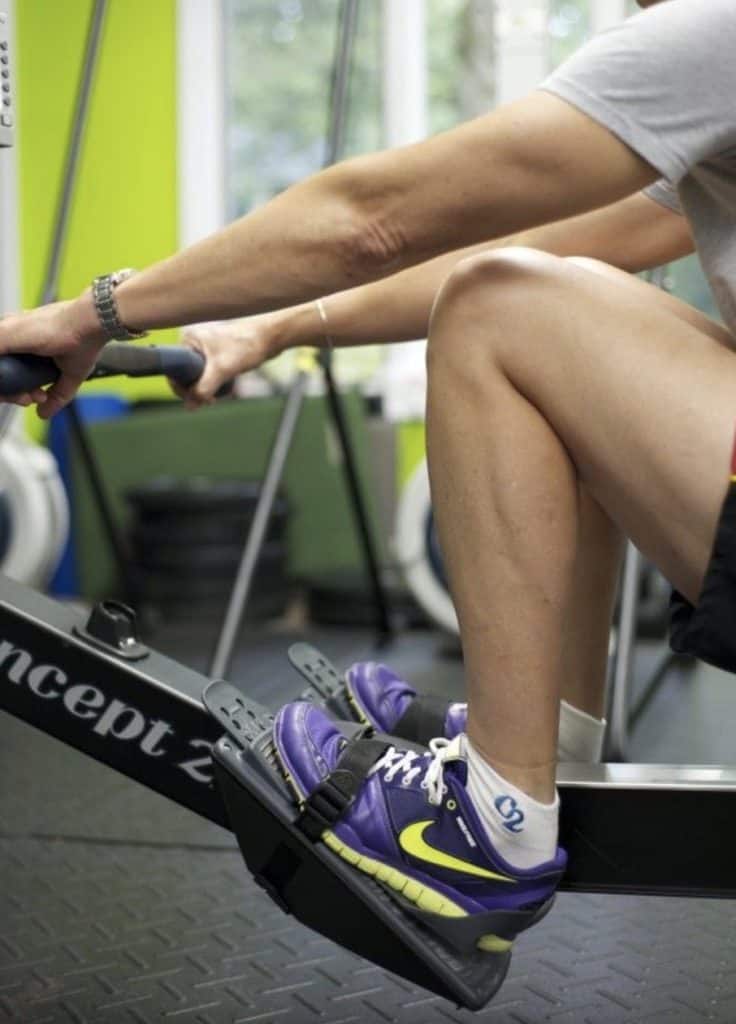
Pushing through the mid-foot allows you to access the power of your whole body and all its muscle groups, in particular those in your legs.
The correct foot placement gives you the correct hip angle and optimizes your connection to the machine. At the end of the day, we want to have the most power possible so that we’re getting the most out of each stroke!
Safety
The right foot placement helps to make sure you’re safe during your workout. An incorrect placement could cause muscle strain or injury, which is the last thing you want!
Safety comes first when you’re doing any workout.
The Correct Foot Position
Whether you own a rowing machine or you’re using one in the gym, it’s important that when you sit down to row, you make the rowing machine yours! What I mean is – you adjust it to fit you.
First, let’s briefly cover foot stretchers and footplates (how I define them). Footplates are the entire base where you put your feet while rowing. Foot stretchers are the flexible layer on top of a footplate with adjustable holes (sometimes called Flexfoots). They move up and down to ensure you get the right position for your foot size.
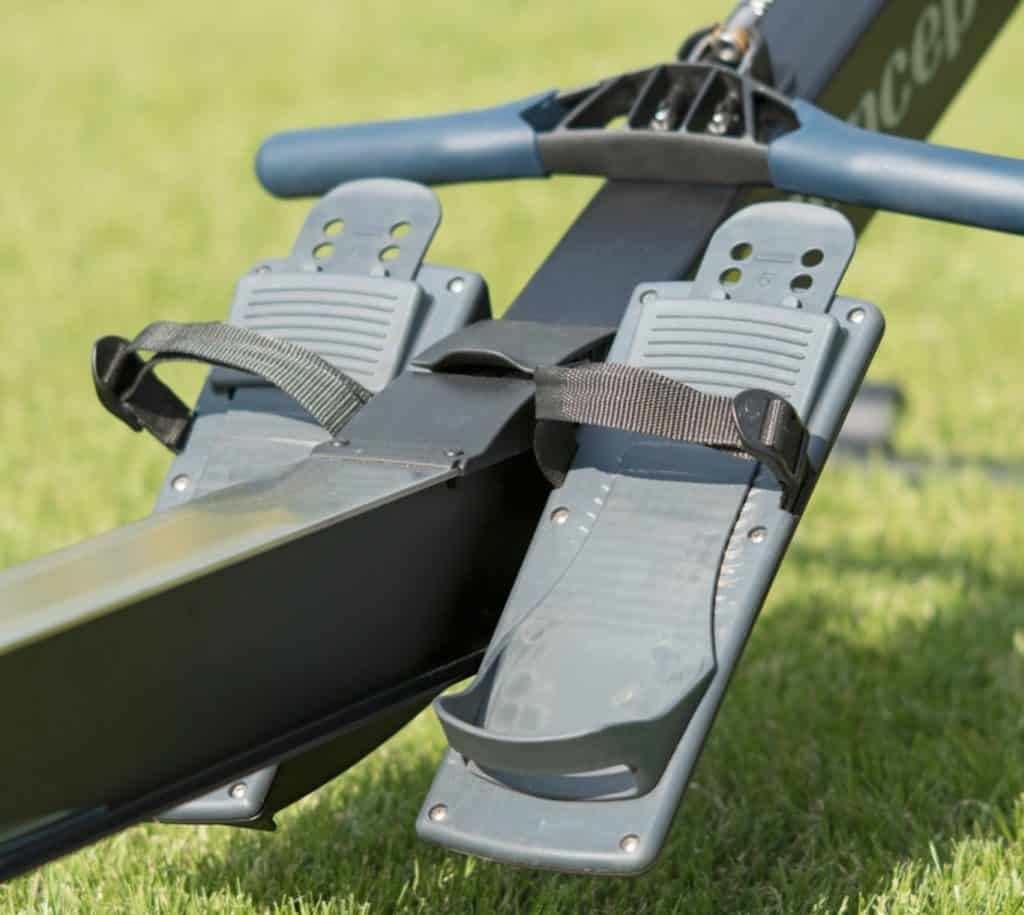
The first thing you should do is adjust the foot stretcher. These adjustments will only take a couple of seconds and it’s the most important step.
This 2019 study on the topic of ‘seated cable rows’ (slightly different but similar positioning) explains: “Proper alignment in the starting position is fundamental to performing all rowing exercises and should be taught to novices. Feet are placed firmly in a shoulder-width position against the footplates with the knees comfortably flexed.”
Let’s take a look at how you can adjust your foot position and where your feet should be placed.
Heel Height
Adjusting the height of the foot stretcher adjusts the angle of your hip as you move forward for the catch. It also ensures your legs are in the right position and you get the most out of your stroke.
If your foot is too high, your knees may be too high which can get in the way of your stroke. If they’re down too low, you likely won’t get as much force and power in your stroke.
Your feet should be at a comfortable height that allows your shin to be vertical. Your knee should be over your ankle when you are in the forward ‘catch’ position. When you’re rowing, your arms shouldn’t come into contact with your knees (if they are, you need to lower the stretchers).
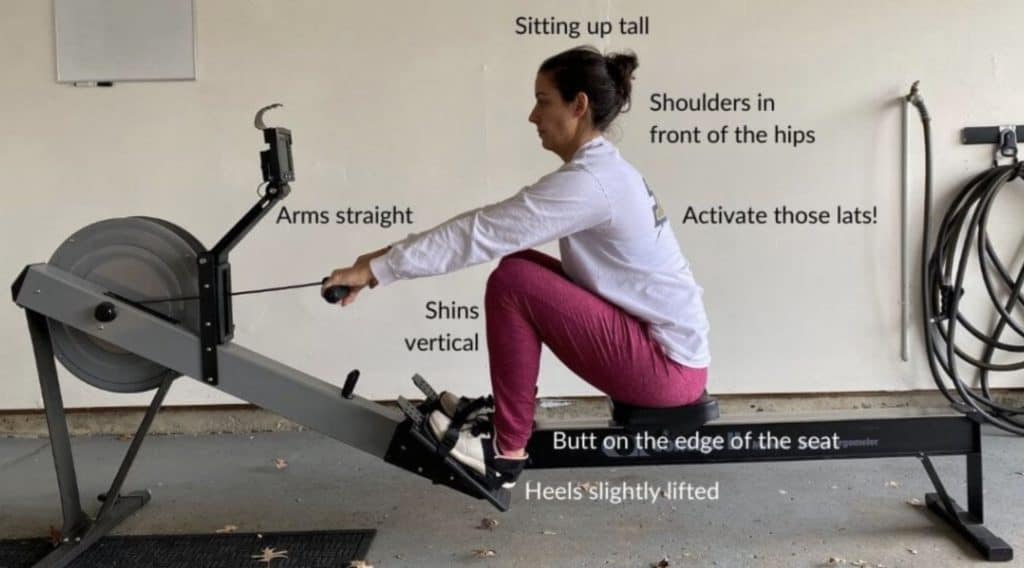
As a general guide, when using the Concept2 or WaterRower, the widest part of your foot should be across the horizontal grove area of the foot stretcher. The foot strap should also be in the correct position (we discuss that more below).
Let’s take a look at some factors that might affect your heel height placement:
- If you have longer shins, your foot stretcher will usually need to be lower.
- With shorter shins, your food stretcher will need to be higher.
- Rowing without shoes, you may need to increase the height of the footplate to ensure you’re in the right position.
- If you’re just getting started with fitness and are less flexible, having your feet lower may be more beneficial.
- If you have some extra weight around your stomach area (or if you’re pregnant), having your feet lower may allow you to get the right position.
I know this can seem a little intimidating but it’s much simpler than it seems! You can use pictures or videos so you can see when you’re in the right position. Don’t be afraid to ask someone to help you if you’re just starting out.
It may take some trial and error to get the optimum position if you’re a beginner. If you’re sharing the rowing machine with others, it’s a good idea to note your heel height to save you time in the future. A lot of rowing machines, including the Concept2, have numbers to make this easy.
Foot Strap Position
The foot strap should be placed across the widest part of your foot. An easy way to think of this is where your lowest shoelace would lie (meaning the one furthest away from you).
You should tighten the strap by pulling it across rather than up, so it sits snugly against your foot. Ideally, you want it to be tight enough so your foot is secure and there’s no risk of your feet slipping as you row. You don’t want your feet moving up and down or sliding around.
Of course, you don’t want it to be so tight that it’s uncomfortable for you! Make sure it’s not so tight it’s cutting off your blood supply or feels as though it’s digging into your foot.
Below is a good image of a strap going across the widest part of the foot (which might be off the shoelaces on some shoes). You can see this in relation to where a person’s toes are due to the person using ‘5-finger’ shoes.
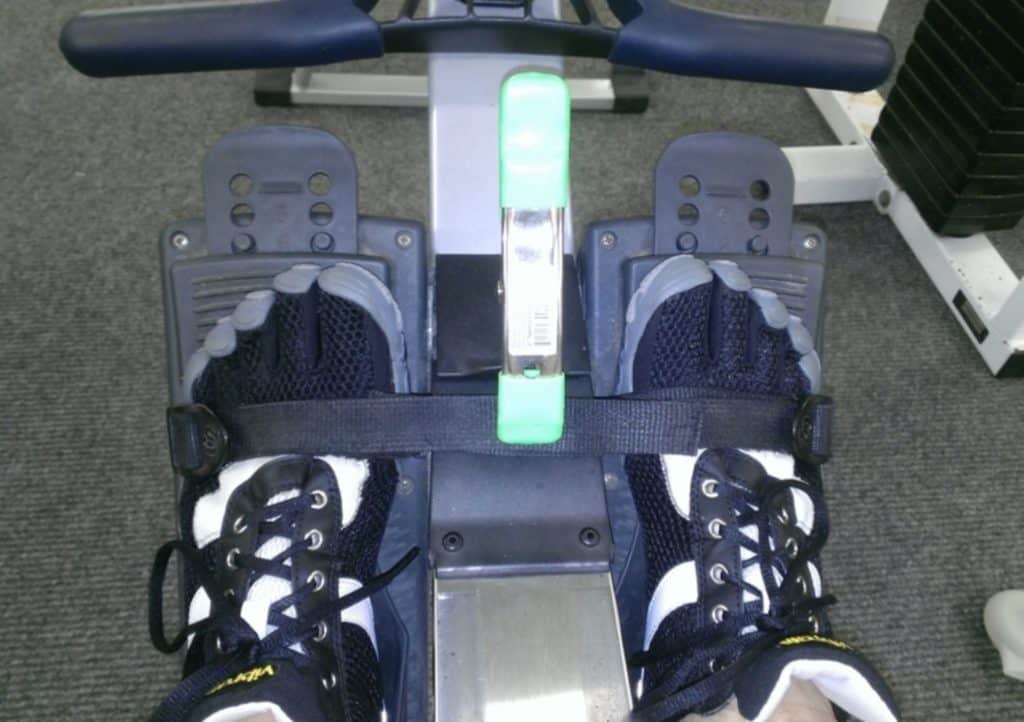
Your heel should be able to come up once your foot is in position. There’s a lot of controversy about whether your heel should come up during a rowing stroke. Fundamentally, your shin should be vertical when you’re in the forward position. If in that position your heel is up a bit, that’s completely fine.
The WaterRower user manual states: “The foot strap is designed to cross the foot at the pivot point of the toes (the ball of the foot). This should enable the heel to be raised off the footboard as the user comes forward with each stroke.”
Foot Position Video
For a more visually appealing demonstration of proper feet position, check out this short video!
Final Thoughts
In conclusion, instead of jumping on the rowing machine and getting started right away, take a few seconds to adjust your foot position.
It only takes a few seconds but it will have a big impact on your comfort and performance!
Now we know the importance of your foot placement and how to adjust it, you can really make the most of your workouts! Before you know it, you’ll be improving your form, burning more calories, and getting stronger!
If you’re new to rowing, you’ll also want to check out my article on proper hand position and grip!
If you have any questions about foot placement or strap positions, please leave us a comment below!

Rowing Machine King Founder and Author.

